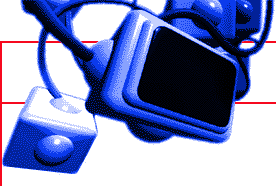Space Station - 2020
Action-Pak
AIMS: To demonstrate the processes involved in cratering. To illustrate the behaviour of different surfaces to impacts.
OBJECTIVES: The solar system contains vast amounts of dust and rock in orbit around the sun. This material has a wide range of sizes, from microscopic to kilometres in length. Most of it is natural, but some material in Earth orbit is man-made, and called "orbital debris". This increases with every launch of a spacecraft. All natural items are referred to as meteoroids, until they reach Earth. If they are small [< 1 mm] they burn up in the atmosphere, and are called meteors, or "shooting stars". If they are big enough to reach the ground, they are called meteorites. The size of craters produced by meteorites depends on their mass and velocity, with the velocity being the most important factor. In this module, you are going to experiment with impacts on different types of surface.
PROCEDURE: Find three plastic trays, at least 4cms deep. Fill one with dry plaster of paris, one with wet plaster, and leave to dry, and one with very thick wallpaper paste, or similar. Cover each surface with something like cocoa powder or powder paint so that all three trays look the same. Find some glass marbles/ball bearings or stones, ranging in size from small to large. Weigh each one. Drop each of the marbles from a set height, and examine the craters produced. How do the craters differ from each other on each of the surfaces? Repeat the experiment, dropping the marbles from twice the height. Repeat the procedure. Double the height again, repeat the procedure again. You may repeat this procedure as many times as you wish. If you can't get up very high, how could you produce the same effect as dropping from a greater height? How do you think you might get consistent results - would you need to make some type of equipment? How would you test it? Make a table of your results. What conclusions can you draw about the effects of mass and speed on the size of the crater? What effect does the nature of the surface have on the crater?
Can you think of a body in the Solar System which has no obvious craters? Why do you think this might be?
Go to Action-Pak 2
Go to Fact-Pak
Warp to the Teachers' Index Page
|





